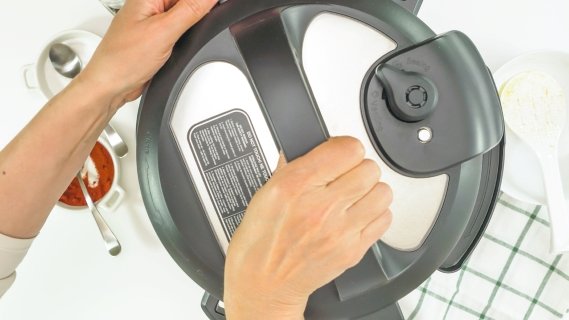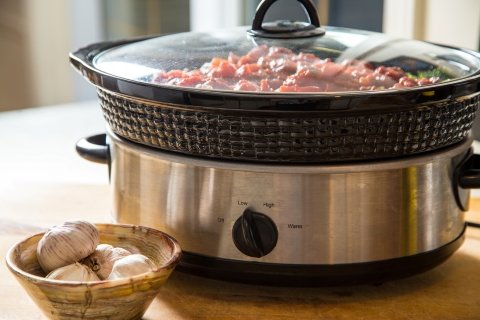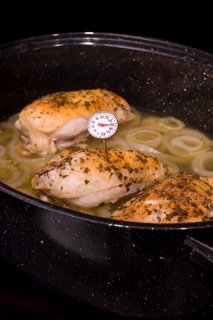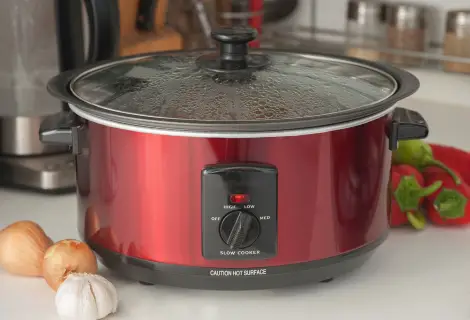Slow cookers have been a lifesaver for millions who want to enjoy a convenient cooking experience. The one question that everyone new to using a slow cooker asks is: Is it better to slow cook on high or low? Today, we will answer it for you.
Ideally, it would be best to use a slow cooker on low settings to enjoy those perfect juicy meals that are a specialty of slow cookers. Cooking on low heat is better when you need to leave food unattended for up to 6 to 8 hours, like meaty stews or broths, whereas high settings are recommended for boiling or cooking quick meals like lean meats or vegetables.
Keep reading this guide as we answer more important questions related to slow cookers.
Table of Contents
Cooking with a Slow Cooker or Crock Pot
A slow cooker is a type of electric pot that cooks food at a moderately low temperature for longer time durations. The slow cooker, or crock pot, helps cook tender and juicy meals infused with flavors, like soups, stews, or slow-cooked meats.
Before we delve deep into whether a low or high heat setting is better, let’s first learn about the advantages and disadvantages of using a slow cooker in the first place.
Advantages of Using a Slow Cooker
Slow cookers have made cooking easier for millions of people, but there is more than just convenience that this special kitchen appliance brings to the table. Here are the benefits of cooking using a slow cooker:
1. You Can Leave Your Food Unattended for Several Hours
There’s no need to constantly stir the pot anymore. With slow cookers, you can add the ingredients to the pot and leave it on low settings for up to 24 hours.
2. Slow Cookers Help Enhance Flavors
Wondering how to make an extra rich and flavorful broth or stew? By using a slow cooker, of course! Slow cooking is primarily used to enhance the flavors of your dish. Moreover, if you are cooking meat or poultry, slow cooking ensures that you enjoy tender, juicy, and melt-in-your-mouth meaty dishes.
3. It Is Easy to Use a Slow Cooker

You do not have to be a head chef or cooking expert to learn how to use a slow cooker. Operating it is easy and convenient and anyone can do it. Just do a thorough read of the user manual of your slow cooker, and you will be good to go.
4. Slow Cookers Help Make Safe and Healthier Meals
A slow cooker uses low temperatures to cook, which helps retain the food’s nutrients and restricts bacteria contamination. This way, you get to enjoy safe, healthier, and more flavorful meals without spending all day in the kitchen.
5. Slow Cookers Can Help Save Costs
Compared to an electric oven or microwave, slow cookers consume less energy and are way safer than a microwave. This way, you can save energy costs and enjoy wholesome large-portioned meals.
Disadvantages of Using a Slow Cooker
Now that we have learned about the benefits of using a slow cooker let’s look at the flip side and learn about the disadvantages of using a slow cooker.
1. Using a Slow Cooker Takes a Long Time
If you need to make a quick meal, using a slow cooker won’t be a wise choice. The standard time required to cook meals on slow cookers falls between 3 to 6 hours, so it is not the best choice for cooking if you want a meal ready in an hour.
2. You Cannot Cook Everything on a Slow Cooker
A slow cooker uses a special cooking method that requires a low heat setting for a longer duration, limiting the number of recipes you can cook on it. You can only cook recipes that require slow cooking or simmering and do not include too many ingredients. Fish and non-root vegetables will just disintegrate.
3. You Cannot Afford to go Wrong with Slow Cookers
Whether you are new to using a slow cooker or an experienced cook, the slightest mistake can ruin your dish if you are cooking it on a slow cooker. From setting the right temperature to maintaining the temperature to taking care of cooking time, there are specific rules to be followed for slow cooking. If you add too much liquid or skip a vital ingredient, your dish may not turn out the same, and there are lower chances of fixing those mistakes.
Remember the long cooking hours; you do not want all that waiting time to go to waste. Just follow the instructions carefully.
4. Excessive Steam Sometimes Affects Food Quality
Excessive steam trapped inside your slow cooker during the cooking process could cause fluctuating temperatures affecting the food quality. The steam produces as a result of condensation, which could change the texture and flavor of the recipe if there is excessive steam.
5. Slow Cookers May Mess Up the Flavors of Your Dish
Adjusting the flavor profile of your dish in a slow cooker can be difficult sometimes. For instance, if your recipe contains aromatic ingredients like cinnamon, basil, thyme, etc., it could produce an overpowering taste. Therefore, if your recipe contains these aromatics, slow-cooking them in a crockpot might not be the best idea.
Low Vs High Heat Slow Cooker
One thing that most slow cooker owners struggle with is deciding whether to go for a high or low heat setting. While setting the slow cooker on high can help you save time, setting it low has its benefits. Cooking on a low heat setting means you do not have to worry about attending to your food and enjoy richer and more flavorful meals. On the other hand, high heat settings will help you save time.

Typically, most old, slow cookers come with high and low settings, but the newer models also have the ‘warm’ settings. This is the lowest heat setting used to keep the food warm enough not to get contaminated. However, it is not recommended to slow cook on the warm settings for longer than 2 to 3 hours, as it increases the risk of contamination.
It is imperative to understand that the primary difference between low and high settings is not the differentiating temperature range, as they have the same peak temperature of 300 degrees Fahrenheit. The primary differentiating factor is the cooking time on high vs. low heat settings. Therefore, it is not recommended to adjust heat settings when your food is slow cooking. Fluctuating temperatures can easily ruin your dish.
A low heat setting is more suited for cooking meaty stews, soups, broths, etc., whereas a high heat setting is preferable for making meat roasts, vegetables, and similar quick and less soupy dishes.
What Temperature Is High on a Slow Cooker?
The highest temperature a slow cooker can reach using a slow cooker is 300 degrees Fahrenheit. While this is the optimum high temperature, it may vary based on what you’re cooking and how you’re cooking it. For instance, if you plan to cook a dish containing an inadequate amount of liquid, the temperature may reach the maximum level way too fast, causing rapid boiling and uneven cooking.
What Temperature Is Slow Cooking on Low?

The optimum temperature range for slow cooking on low heat is 190 to 210 degrees Fahrenheit. However, this temperature can reach 300 degrees Fahrenheit if the food is left on low settings for more than 8 hours because the liquid in the pot will boil away. Note that these temperatures may vary depending on the model, brand, and cooking time.
Can You Switch a Crock Pot From Low to High?
Yes, it is possible to switch the crock pot from low to high, but we advise against it. If you need to cut down the cooking time of your dish, you can switch the crockpot setting from low heat to high. To effectively convert the cooking timing from low to high, follow the 2:1 ratio, where 2 hours on low heat means 1 hour on the high heat setting.
If you have difficulty converting the cooking times from low to high, continue reading as we share a table highlighting low to high cooking time conversion.
Slow Cooker Conversion Low to High
Refer to the table below if you need to convert low setting hours to high setting and vice versa.
| Slow Cooker on Low Setting | Slow Cooker on High Setting |
|---|---|
| 4 – 6 hours | 1.5 – 2.5 hours |
| 6 – 8 hours | 2 – 3 hours |
| 8 – 12 hours | 4 – 6 hours |
Following are some examples of slow-cooked meats and their cooking periods on high and low heat:
| Meat and Weights | Time on Slow Setting | Time on High Setting |
|---|---|---|
| Beef brisket or Swiss steak 3 - 4 lbs | 8 – 10 hrs | N/A |
| Beef roast 3 - 4 lbs | 8 – 9 hrs | 5.5 – 6 hrs |
| Meat loaf | 8 – 9 hrs | 4 – 5 hrs |
| Chicken breast 1 lb | 6 – 7 hrs | 3 – 4 hours |
| Pork roast 5 - 6 lbs | 9 – 10 hrs | 6 – 7 hrs |
| Ribs | 6 – 7 hrs | 3 – 4 hrs |
| Whole Chicken 6 lbs | 7 hrs | 6 hrs |
| Stew 3 lbs | 6 hrs | 4.5 hrs |


